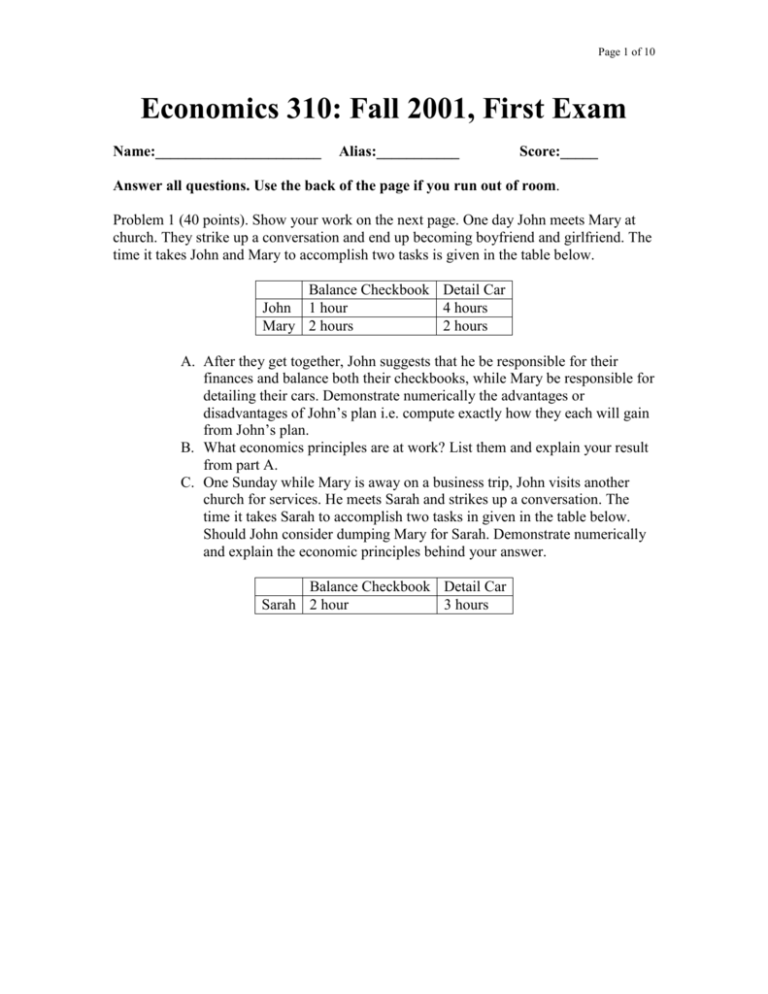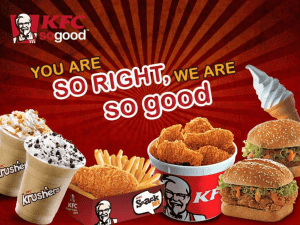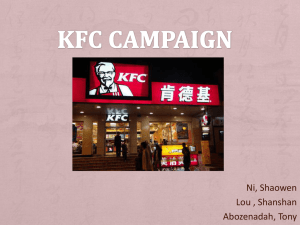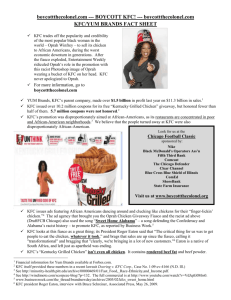Fall 2001 - CSUNEcon.com
advertisement

Page 1 of 10 Economics 310: Fall 2001, First Exam Name:______________________ Alias:___________ Score:_____ Answer all questions. Use the back of the page if you run out of room. Problem 1 (40 points). Show your work on the next page. One day John meets Mary at church. They strike up a conversation and end up becoming boyfriend and girlfriend. The time it takes John and Mary to accomplish two tasks is given in the table below. Balance Checkbook Detail Car John 1 hour 4 hours Mary 2 hours 2 hours A. After they get together, John suggests that he be responsible for their finances and balance both their checkbooks, while Mary be responsible for detailing their cars. Demonstrate numerically the advantages or disadvantages of John’s plan i.e. compute exactly how they each will gain from John’s plan. B. What economics principles are at work? List them and explain your result from part A. C. One Sunday while Mary is away on a business trip, John visits another church for services. He meets Sarah and strikes up a conversation. The time it takes Sarah to accomplish two tasks in given in the table below. Should John consider dumping Mary for Sarah. Demonstrate numerically and explain the economic principles behind your answer. Balance Checkbook Detail Car Sarah 2 hour 3 hours Page 2 of 10 Problem 2 (40 points). Use the blank graph on the next page for your answer. Label all relevant lines and values. Hashem is the CEO of a large company and earns $100 per hour. He typically works 40 hours per week and pays 40% of his income in taxes. Use the graph on the next page to answer the following questions. A. Draw his weekly before and after tax budget line and indifference curves between leisure and consumption. B. Suppose President Bush passes a tax cut bill which provides for a $1000 lump sum rebate (he gets the $1000 no matter how long he works and as long as he earns more than $1000 per year) in Hashem’s taxes. Graphically show the effect of the tax cut on Hashem’s consumption of goods and leisure assuming that leisure is a normal good. C. What effect will the tax cut have on the production of goods and services? Show the substitution and income effects of the tax cut on your graph. D. Suppose President Bush reduced Hashem’s taxes by cutting the rate he pays rather than giving a lump sum rebate. a. How much would Hashem’s rate have to be reduced to generate a $1000 reduction in Hashem’s taxes? b. Show the effect of such a rate cut on Hashem’s budget line. c. Which type of tax cut, a $1000 lump sum rebate or a rate reduction which reduces Hashem’s taxes by $1000, would have a greater effect on the production of goods and services. Explain and show on your graph. Page 3 of 10 Page 4 of 10 Problem 3 (20 points). Read the two articles on the following pages. Comment and discuss anything in the articles using the principles discussed in class or the textbook. Use economic terminology where appropriate. Your score on this question will be determined by how well you relate any events in the article to economic principles. Page 5 of 10 THE WORLD Third-World Imports Besiege Mexico Farmers Trade: Ill-prepared for competition, they are fighting to survive a deluge of cheap produce. By CHRIS KRAUL, TIMES STAFF WRITER ISLA, Mexico -- For Rodrigo Hernandez, ground zero in the war over globalization is not Genoa or Seattle, but a stretch of freeway slicing through a desolate swamp. It's where he and hundreds of other farmers last month dumped 400 tons of pineapple they couldn't sell. For 12 hours, pineapple farmers blockaded the road. The action was just one of several recent protests across Mexico by farmers who are angry, frustrated and driven to desperation. Their corn, oranges, cotton and sugar have been clobbered by cheaper U.S. imports, and many campesinos see free trade as the culprit. But there is a different note to the pineapple growers' lament. The invading produce is coming not from the high-tech agro-combines of North America but from another Third World country: Thailand. A deluge of canned pineapple imports--4,474 tons last year versus 692 tons the previous year--has sent prices plummeting, leaving Hernandez and about 2,000 other Mexican growers struggling to survive. "This was a good business a couple of years ago. Now the entire countryside is going broke. The big fish are eating the little ones," said Hernandez, referring to the relationship between overseas producers and Mexican growers. Mexican farmers are under siege from all sides in the rapidly globalizing commodities market, with imported pineapple being just one example. Rice from Uruguay, bananas from Guatemala and hides from India have gained better access to Mexico as free trade spreads. Farmers, ill-prepared for the competition, are becoming increasingly militant. Two weeks ago, hundreds blockaded entrances at Mexico's largest port city, Veracruz, in a demonstration against imported rice and fruit. Last month, sugar farmers laid siege to the economy ministry here, shutting down the offices. And in June, farmers in Sinaloa state took over oil plants and highway toll booths to protest increased tolls and reductions in government subsidies. But few regional farm economies are more devastated than this area of southeastern Mexico, where 100,000 people depend on pineapple for their living. Prices dropped to just $15 a ton last season from $120 a ton in 1998. After spending an average of $20,000 an acre over the 18-month growing season, many farmers reaped just $5,000 an acre. It is hardly surprising that farmers left nearly half of the harvest in the field to rot, to save the expense of picking it. The causes of the crisis range from extreme over-planting to the overcapacity of canneries and a weakened economy. But growers here place blame on imports of canned Thai fruit that is priced so low, despite 23% duties, that local growers and canners cannot compete in the domestic market. Mexico has never developed an export trade in the fruit; less than 5% of its pineapple goes abroad. Devastating Effects on Region Mexico is not the only victim of low-price imports. The Hawaiian pineapple industry has been decimated by cheap Asian fruit. Although the $65-million-a-year Mexican pineapple industry is relatively small, the effects of competition have been devastating for this region of southern Veracruz state. Children are being pulled out of Isla schools to replace hired farm labor. Burglaries and cattle rustling are on the rise. The bus that leaves every Thursday morning from nearby Loma Bonita for Ciudad Juarez on Page 6 of 10 the U.S.-Mexico border is jam-packed. Many passengers will cross illegally into the United States to flee the economic hardship. And with pineapple prices expected to remain depressed for another year, the misery index here will only rise. Those prospects have led to dark humor among farmers, some of whom say that what they really need is a Subcommander Marcos, the Mexican guerrilla leader in Chiapas state, to lead a rebellion. "If things get any worse, I'll have to go the 'other side' [the United States] just to maintain us," said Hernandez, 45, who has a wife and two children, ages 6 and 8. He has had to sell his 25-acre farm and house to pay his debts. "There is no other recourse." Though industry planning might have prevented some problems, the root of the crisis is in Mexico's lack of a farm policy dealing with trade. Membership in the North American Free Trade Agreement and the World Trade Organization has forced the country to lower barriers that protected agriculture, but the adjustment was made more painful because Mexico was caught unprepared. Programs that are as second nature to U.S. farmers as crop research and subsidized loans simply aren't available. "You don't see any public coordination at any level, regional or federal. There is no information on what pineapple producers can produce or what prices might be next year. Everyone is on their own," said Enrique Dussel, an economics professor at National Autonomous University of Mexico who specializes in agro-economics. Gross Over-Planting Creates Surplus More evidence of agriculture's ills surfaced last week when the Mexican government seized 27 sugar mills that it had privatized in the 1990s. Among the industry's problems: cheaper U.S. corn sweeteners, which have flooded the market since the free-trade provisions of NAFTA took effect. Better information might have reined in the gross over-planting of the crop harvested last season, which created a surplus just as Mexico was diving into recession. Big profits in the mid-1990s caused everyone from taxi drivers, school teachers and police officers to plant pineapple, said longtime grower Gonzalo Amador. Amador and other big farmers in the area accuse the government of having joined NAFTA and the WTO without consulting them, the very farmers such deals would most directly affect. Rural development expert Tomas Martinez, of the Postgraduate College in Chapingo, the nation's top agriculture school, said Mexico's NAFTA negotiators incorrectly assumed that Mexico would remain a low-cost competitor on a global stage, aided by a weak peso. "We are now living in a macroeconomic situation that we never dreamed of," Martinez said. Mexico Economy Secretary Luis Ernesto Derbez told reporters last month that the farm policy inherited by President Vicente Fox is a shambles and that crafting a new one was one of Fox's biggest challenges. Derbez promised to unveil a program soon to help coffee growers, a plan that will include subsidized credit and planning. The Agriculture Ministry is working on a comprehensive plan to help pineapple growers that may include technical and marketing assistance, even debt renegotiation. The government says it also is stepping up an attack on contraband Thai pineapple, which some Mexican canners are illegally labeling as their own because buying it costs less than canning Mexican fruit. Growers Suffer From Knowledge Gap But pineapple farmers also must become more market-savvy, Agriculture Undersecretary Victor Manuel Villalobos said. Page 7 of 10 "It's a complex situation. There is a lack of knowledge of what the market wants in terms of size of the fruit and when to deliver it. Farmers know how to produce but not to sell, and that's what we want to organize," Villalobos said. The new program "won't have an immediate effect though. Next year there will be a greater impact," he said. Poor farmers such as Hernandez only dimly understand the economics involved in global commodities. What Hernandez does know is that until two years ago he made a good living growing and selling pineapple, seeing his standard of living slowly but steadily rise. Profit was good enough to finance the purchase of his farm, support several relatives and spur dreams of better lives for his children. But in spring 2000, those dreams evaporated when pineapple prices collapsed as huge quantities of canned Thai pineapple began to show up on store shelves. The upshot for Hernandez, one of 1,500 residents in a communal farm area called Ejido Dobladero in the country's pineapple-growing region, is that financially he is underwater. "We have no money to continue struggling, no money to buy fertilizers or pesticides. There is no work, so 75 people, mostly young, from the ejido have gone to El Norte in the last two months. "We have lost everything," he said. Ruling the Roost in China KFC has developed a new secret recipe--measured expansion, cagey marketing and cheerful service--and the customers are flocking in. By EVELYN IRITANI, TIMES STAFF WRITER LI YANG, China -- The only people in the dingy New Wind Restaurant at lunchtime are the cooks, who are playing cards. Asked about the restaurant's specialties, owner Ding Huang skips the sales pitch with a curt: "It's Chinese food." Across the parking lot, smiling hostesses, "flowers," as they are known, welcome a steady stream of customers to KFC. Cash registers ring up a sale every 90 seconds in the two-story air-conditioned restaurant. A group of boisterous children are gathered upstairs for the afternoon exercise class. In 1998, Ding took his 5-year-old-daughter to the KFC's grand opening to sample Colonel Sanders' exotic fare and witness the hoopla. The Chinese restaurateur, a loyal Communist Party member, warned her that the popular fast-food chain is "owned by a foreign corporation that wants to take our Chinese people's money." His daughter listened but it made little difference. She declared the fried chicken delicious. Ding said he won't ever go back to the chicken store, but he has resigned himself to a reality that plays out every day just a stone's throw from his livelihood: "I think KFC will spread all over the world," he said, sighing. Ding's lament accurately captures a roaring story of capitalism in China, which is emerging as one of the world's hottest fast-food battlegrounds. The smiling colonel of KFC, the market leader, is pitted against the golden arches of McDonald's. The weapons include cutthroat promotions such as ice cream cones for a dime. Since becoming the first foreign fast-food chain allowed to enter China in 1989, Dallas-based Tricon Global Restaurants Inc., KFC's parent company, has built 490 stores in 120 cities, nearly all companyowned, and is still expanding. Just to meet its goals for the 100-plus stores on the drawing boards, Tricon Page 8 of 10 will have to finish a store every three days. McDonald's, which recently announced plans to begin franchising in China in 2002, lags behind by at least 100 stores. KFC is hoping to reach 5,000 stores within two decades. The colonel's statue still is found only in China's most populated regions, leaving at least 400 major cities crispy chickenless. In Hunan Province, which has a population of 100 million, there are just three KFC stores. This chicken blitzkrieg already has made KFC the most recognizable foreign brand of any kind in China, ahead of such staples as Coca-Cola, Mickey Mouse and Nestle, according to a survey last year by AC Nielsen. In the United States a basic KFC meal can be bought for less than an hour's work, even at the minimum wage. In China, an Original Chicken meal costs nearly $3, the equivalent of six hours of work for the average person. Despite that bar, KFC's China operations claim the highest per-store sales in the world, 20% above the U.S. Shawn Gu, a 50-year-old California restaurateur who operates the KFC outlet in Li Yang, finds some irony in his success in China. Born and raised in Taiwan by parents who had fled the Communist takeover in 1949, Gu was force-fed terrifying stories about the poverty and tyranny of the land across the Taiwan Strait. He moved to the United States in 1979, settled in Riverside and made his fortune in a string of restaurants selling pizza, chicken and Chinese food. He sold off most of his restaurants in 1987 after a serious car accident and went into semiretirement. But he grew tired of playing golf, and his wife, Jennifer, urged him to visit the mainland and look for opportunities. In 1991, a reluctant Gu finally flew to China. Once he saw the long lines at KFC's Beijing branch, his entrepreneurial juices began to flow again. He couldn't get his own outlet because Tricon had decided against franchising in China so it could control quality and protect its brand. Starting up even company-owned stores was a major headache: Chinese chickens were scrawny and the potatoes misshapen for French fries. Though the company is now able to source 95% of its supplies locally, it still imports mashed potato powder, French fries, corn on the cob and, of course, stockpiles of the secret recipe of 11 herbs and spices used to flavor its chicken. Staying in the good graces of the Chinese government was difficult and time-consuming, because the laws were continually shifting and corruption widespread. It took KFC several years to get permission to hire part-ime workers, a new concept in a country accustomed to the iron rice bowl of lifetime employment. U.S. firms are forbidden from paying bribes overseas, but Chinese officials are masters of creative fundraising. Just setting up a KFC franchise can require 100-plus obscure licenses and permits, all of which carry a fee. "We needed to crack the code ourselves first" before offering franchising, said Joseph Ho, director of franchise relations for KFC in China. While Tricon built its chicken empire, Gu bided his time. He invested in two Chinese restaurants, bought a home in Nanjing and commuted every three to four months to California, where Jennifer and son Joe remained. His wife manages their Chinese restaurant in Sun City, the Great Wall. Company's Franchise Limitations Stringent In 1993, Tricon finally allowed a Taiwan entrepreneur to establish the first KFC franchise in Xian. Two years ago, the company decided it was time to get serious about franchising. It set the bar high: In addition to having at least $1 million to invest in the license, franchise operators had to have restaurant experience and a clear understanding of the risks of doing business in China. Tricon required its franchisees to purchase an operating restaurant--dubbed the "already cooked chicken franchise"--and run it at least a year before expanding. Franchisees--who pay a licensing fee of 6% of gross sales--were barred from operating in China's biggest cities, where the company-owned restaurants dominated the turf. Page 9 of 10 Despite the costs, Gu was at the head of the line. For six months, Gu was grilled about his history, business experience and motivation. Out of dozens of interested franchisees, he was one of just three who were approved. Gu scouted more than 100 locations before deciding to sink his money into the Li Yang store. The economically depressed city of 200,000, about three hours by car from Shanghai, was not an obvious choice. Unemployment was high, thanks to layoffs at problem-plagued state-owned textile firms, and many men had left for construction jobs in other parts of China or abroad. But Gu knew better than to trust the official numbers. He was confident that many of the absentee workers, traders and farmers had incomes that were not reported to the government. "In Shanghai, people look much richer but their house is small," he said. "In these small towns, people look poor but they spend more money on food." Outside China's largest cities, Western fast food was still an oddity. KFC cashiers were warned to be patient while customers dissected the menu and asked such questions as: What part of the chicken is a nugget? Can I touch a burger? Is the food the same size as it appears in the advertisement? Gu made his KFC synonymous with the good life: birthdays, good grades, graduation. He targeted the parents and grandparents who spend lavishly on their "little emperors," the offspring of China's one-child policy. The restaurant offers children colorful plastic superheroes, free English and exercise classes and daily songfests touting the benefits of oral hygiene and traffic safety. Gu sponsors an educational radio spot and gives away gift certificates to outstanding students. On International Children's Day, June 5, the Li Yang restaurant had lines snaking out the door and served more than 2,000 customers, twice the usual number. Its classes are so popular that children are limited to two sessions a week. Parents even ask the young staff to help their children with homework. Rui Zhenhua, a 33-year-old Li Yang city employee, brings his family to KFC every two or three weeks for dinner. He said he doesn't like deep-fried food, pronouncing it "too greasy," but his daughter loves the French fries and the dancing. And KFC is one of the few places in town that doesn't allow smoking, which means diners can actually see their food. "This is a place for special occasions," Rui said, watching his daughter celebrate her 7th birthday with Ru Rongfong, 21, one of the restaurant's five hostesses. Ru is so well-known that she is mobbed by children when she goes swimming or to other public places. Being an American icon hasn't eliminated every hurdle. Last year, fearful parents began restricting their daughters' visits to KFC after a media report that the chicken contained hormones that accelerated puberty. KFC strongly denied that claim. "There's a downside to being an American symbol," said Tony Chen, Tricon's spokesman in Shanghai. "But in their hearts, the Chinese trust foreign products." When the NATO bombing of the Chinese Embassy in Belgrade, Yugoslavia, touched off violent antiAmerican protests in 1999, two KFC outlets were destroyed and 20 heavily damaged. The staff in Li Yang were terrified. But when the sun rose after the first day of rioting, the colonel was unscathed and the only people outside the glass doors were hungry farmers waiting for breakfast. Manager Liu Weihui, a Tibetan-born Chinese who has worked for KFC for seven years, told his worried staff to keep serving up chicken with a smile. "We reminded them that the economy is separate from politics." It is foreigners such as Gu who are driving that idea home. Page 10 of 10 Instead of Communist slogans, the walls of the employee lunchroom are a call to arms for a China that welcomes capitalists into the party. One chart details the speed of each cashier's transactions and the number of times the employee succeeded in cajoling a customer to "supersize"--order a bigger size. Another has a game in which teams of KFC employees compete for "thank-you notes" from colleagues. The team with the most notes at the end of the month wins 100 yuan, about $12. Two hundred hopefuls apply for every job opening. The pay isn't bad for China, though the jobs average just 24 hours a week. Trainees start at the government-mandated minimum wage of 37 cents an hour but get regular raises and bonuses. In a country where the annual per capita income hovers at $1,000, Gu pays his managers $500 a month plus a housing and food stipend and up to two months' pay as a bonus. Some of Gu's staff left better-paying jobs to sell fried chicken. Zhang Tingting, 23, was working for a stateowned telecom firm at twice the salary when she applied at KFC three years ago. Her father, a middle school principal, objected to the move, fearful his daughter would lose face by washing tables and serving food. Testimonials to Customer Service But Zhang, who has been promoted to trainer, said KFC offers a much friendlier and more supportive atmosphere than her previous job. "In my former job, even if we were very busy the manager wouldn't give us a hand," she said. "If I need help, I can ask Mr. Gu. He will do anything. He can even package French fries." A company album titled the "Power of Love" is a must-read for all new KFC hires. It is a collection of testimonials from staffers describing what they have done to give their customers the "101%" KFC treatment. A customer who arrives on a bicycle laden with bags gets curbside service so he doesn't have to leave his belongings. A highchair magically appears table-side for a mother balancing a baby and a toddler. These courtesies might seem minor to someone raised in a Nordstrom's consumer culture, but they're unusual in China. KFC has even won begrudging praise from its competitors. Zhu Jianzhou, 27, manager of the Yong He restaurant, has ventured down the street for a KFC meal several times, hoping to borrow some ideas. His Taiwan-based fast-food chain offers up a drab imitation of its flashier Western neighbor. Two young women sit behind the counter dressed in bright yellow polo shirts and orange caps, but their smiles appear forced. It is lunchtime and the large restaurant is nearly deserted. "From the management standpoint, we are just at the beginning," Zhu admitted. Even Ding, the restaurant owner who is boycotting KFC, has picked up a few tips. Gu, who occasionally drops by for Chinese food, has suggested that Ding ask his waitresses to smile at the customers so they would feel a little less like unwelcome intruders. "That made good sense," Ding said, especially because it didn't cost anything. But he spurned as "impractical" the idea that he paint the place and invest in some new furniture. Gu soon will be taking his advice elsewhere. He already has scouted out his next location, a smaller city about half an hour's drive away. Within 10 years, he hopes to have 15 stores in the countryside surrounding Nanjing. Just a few months ago, he called his wife and warned her that he was going to have to delay his retirement plans.






